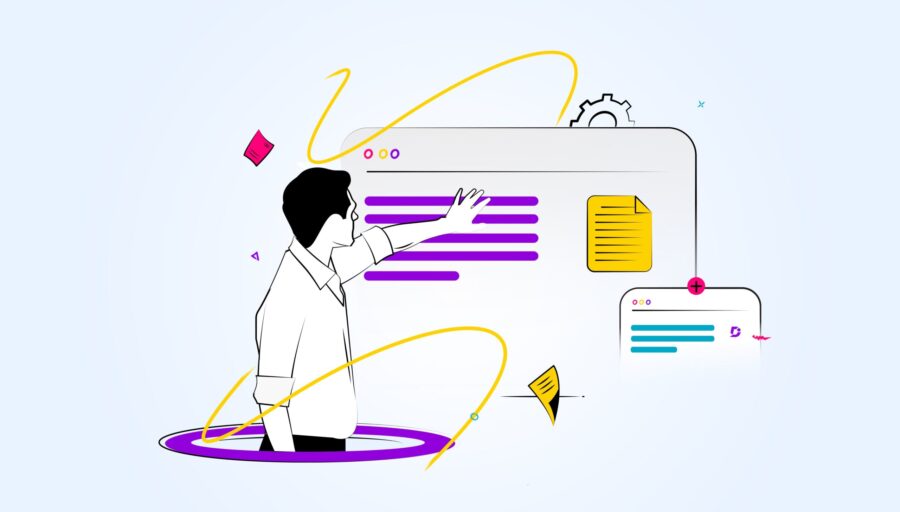
APIs are the backbone of interconnected systems, enabling seamless data exchange and functionality integration across diverse applications. One of the foundational pillars of successful API implementation lies in its documentation and design. Clear, comprehensive documentation coupled with thoughtful design eases the integration process and enhances developer experience, fostering faster adoption and innovation.
Importance of API documentation and design
Clarity Breeds Efficiency: API documentation is a communication bridge between developers and the API provider. Concise documentation delineates endpoint functionalities, parameters, request-response formats, and authentication methods. This clarity accelerates development by eliminating guesswork and reducing the learning curve for integrating APIs into applications.
Design Matters: An intelligently designed API prioritizes intuitive endpoint naming conventions, consistent data formats (like JSON or XML), and logical endpoint structures. Clean, well-structured APIs simplify navigation and usage, allowing developers to grasp and leverage the offered functionalities swiftly.
Components of comprehensive API documentation
1. Endpoint details
A comprehensive list of endpoints lies at the heart of API documentation. Each endpoint should be meticulously documented, providing details about its purpose, the HTTP methods it supports (GET, POST, PUT, DELETE), and the parameters it accepts. This section acts as a roadmap, guiding developers on interacting with the API effectively.
2. Request-response formats
The documentation should articulate the expected format for requests and the structure of responses. This includes specifying data types, required fields, and optional parameters. Real-world examples showcasing sample requests and corresponding responses provide developers with practical insights into formulating requests and interpreting API responses accurately.
3. Authentication and security measures
Security is paramount in today’s interconnected digital landscape. API documentation should explicitly outline the authentication methods required for accessing the API, whether it’s OAuth, API keys, JWT tokens, or other mechanisms. Additionally, it should elaborate on the security measures implemented to safeguard sensitive data during transit and storage.
4. Code samples and tutorials
Incorporating code samples in multiple programming languages empowers developers by demonstrating the integration process step-by-step. Tutorials that showcase everyday use cases, along with accompanying code snippets, help developers understand the practical implementation of the API within their applications. These examples are invaluable resources, guiding developers through potential stumbling blocks and accelerating their learning curve.
5. Rate limiting and usage policies
Documentation should clarify any rate limits imposed on API usage, outlining the thresholds and consequences of exceeding these limits. Clear guidelines on usage policies, including any restrictions or constraints on specific functionalities or user roles, enable developers to anticipate and adapt their applications accordingly.
6. Versioning and change log
As APIs evolve, versioning becomes crucial to maintain backward compatibility while introducing enhancements or changes. A well-documented versioning strategy informs developers about the latest version, deprecated functionalities, and breaking changes. A detailed change log highlights modifications between versions, aiding developers in understanding the impact on their existing integrations.
7. Error handling and status codes
Transparent error-handling mechanisms are indispensable in troubleshooting issues developers might encounter during integration. Clearly defined error codes and descriptions and suggested actions or troubleshooting steps expedite the debugging process and help developers address encountered issues effectively.
Comprehensive API documentation goes beyond endpoints; it’s a living, evolving document that is a reliable reference guide for developers embarking on the integration journey. By encompassing these essential components, API documentation becomes a treasure trove of knowledge, empowering developers to navigate the intricacies of an API with confidence and proficiency.
Top of Form
Best practices for API design
1. Consistent naming conventions
Uniformity in naming conventions simplifies API usage and promotes clarity. Adopting descriptive and consistent naming for endpoints, parameters, and responses ensures predictability and ease of comprehension. For instance, consider an e-commerce API with endpoints like /products for fetching product details and /cart/add for adding items to the cart. Consistency in naming enhances discoverability and reduces cognitive load for developers.
2. Resource-oriented design
Following a resource-oriented design aligns with RESTful principles, making APIs more intuitive and aligned with standard HTTP methodologies. Each API endpoint should represent a resource, and HTTP methods should correspond to CRUD (Create, Read, Update, Delete) operations. For example:
- GET /users: Retrieves a list of users.
- POST /users: Creates a new user.
- PUT /users/{id}: Updates a specific user.
- DELETE /users/{id}: Deletes a user by ID.
3. Use of HTTP verbs and status codes
Leveraging appropriate HTTP verbs (GET, POST, PUT, DELETE) for specific actions on resources enhances the API’s predictability. Additionally, utilizing standard HTTP status codes accurately communicates the API request outcome. For instance:
- 200 OK: Successful response.
- 404 Not Found: Resource not found.
- 400 Bad Request: Invalid request.
- 500 Internal Server Error: Server-side issues.
4. Versioning strategy
Versioning APIs allows for backward compatibility while introducing new functionalities. Implementing versioning in the URL or headers (e.g., api/v1/resource) helps manage changes without disrupting existing integrations. For example:
5. HATEOAS (Hypermedia as the engine of application state)
Including hypermedia links in API responses guides developers on available actions, enabling them to navigate the API dynamically. These links provide paths to related resources, aiding in building more self-descriptive and navigable APIs.
6. Pagination and filtering
When dealing with large datasets, implementing pagination and filtering mechanisms improves performance and reduces bandwidth usage. Parameters like page and limit facilitate fetching data in manageable chunks while filtering parameters like filter or query enable tailored data retrieval. For instance:
- GET /products?page=1&limit=10: Retrieves the first ten products.
- GET /products?category=electronics: Filters products by category.
By adhering to these API design best practices, developers can craft intuitive, consistent APIs that align with industry standards. Embracing these technical considerations fosters a seamless integration experience, empowering developers to leverage the API’s functionalities efficiently and effectively.
Conclusion
In software development, APIs are the linchpin for seamless connectivity and innovation. However, the success of an API heavily relies on the clarity and design articulated in its documentation. Clear, comprehensive documentation paired with thoughtful design choices streamlines integration and empowers developers to innovate, ensuring a competitive edge in today’s fast-paced technological landscape.

